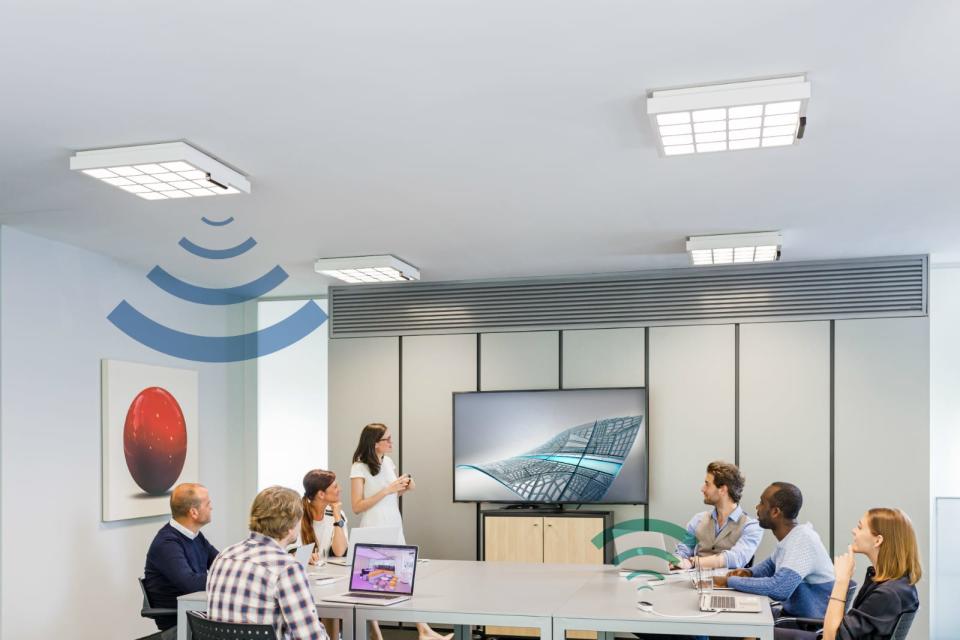Signify's LiFi system promises up to 150 Mbps internet via LED lights
Trulifi is intended for professional markets, like hospitals and factories.
This week, Signify, formerly Philips Lighting, launched one of the first commercial LiFi, or Light Fidelity, systems. LiFi transmits broadband internet through lights, using LEDs to move data and bypass radio signals. We've seen some experimental applications of the tech, but this is the most realistic deployment yet.
Signify's LiFi system, called Trulifi, uses optical wireless transceiver technology built into Philips lights. Users will need a USB-access key, plugged into a laptop, to receive the LiFi signal. Once connected, Trulifi can provide wireless connectivity at up to 150 Mbps. According to the company, that's fast enough to stream 30 1080p HDTV movies at once.
Signify's first two Trulifi customers are corporate clients Globalworth, in Poland and Romania; and Claerhout Communication Campus, in Belgium. Trulifi is aimed at such professional markets, and Signify says it could be used in hospitals, where radio frequency (RF) communication may be restricted, or in areas where the signal is already crowded. It could also be used to connect robots or machines in industrial plants.
In addition to speed and avoiding crowded radio frequencies, LiFi offers a few key benefits. Because the data is transmitted via light, it can travel wherever light can -- like deep underground where WiFi is limited. And because light can't penetrate walls, neither can the data. That could be a draw back in buildings with lots of partitions, but it also makes LiFi easier to secure. One benefit unique to Trulifi is that it uses optical wireless transceivers built, or retrofitted, into Philips lights, meaning users won't necessarily have to replace their existing lighting infrastructure to give the LiFi a go.


